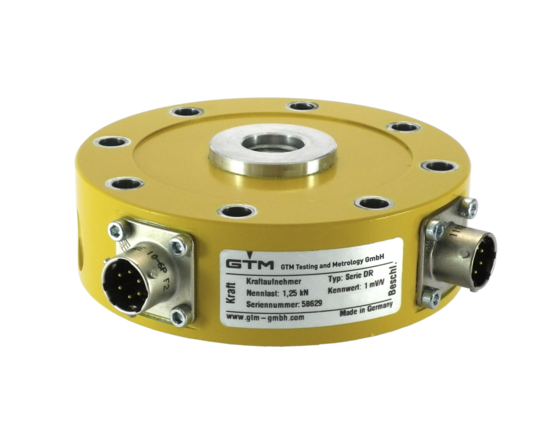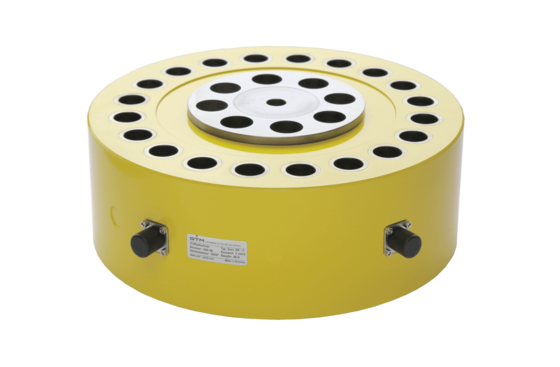
GTM granted patent for force-acceleration transducer



Innovation to aid suppliers and operators: future-proof dynamic test rigs thanks to flexible application
GTM presents its latest patented invention: a combination force-acceleration transducer that allows compensating for acceleration forces in dynamic measurements on test rigs. “Our innovation provides extra flexibility because you can use it for varying testing scenarios,” says Christoph Seipel, who handles development of dynamic force transducers at GTM and invented the new solution. The invention, which will benefit test rig suppliers and operators, was granted protection under patent by the European Patent Office on 20 September 2019.
How the patented force-acceleration transducer works
A force-acceleration transducer can compensate for the measurement inaccuracy produced by the relative acceleration of masses between force measuring point and specimen. Usually, this is handled by a single acceleration sensor attached to the force transducer, adaptor or specimen.
The patented force-acceleration transducer, however, merges the force transducer and two or more MEMS acceleration sensors with different sensitivity characteristics. One of the sensors possesses high sensitivity at low acceleration rates and in the low frequency range. Another sensor conducts readings at greater acceleration rates, its range reaching kilohertz. The option to attach further sensors allows extending the scope of application. Users choose and connect the acceleration sensor best suited to the measuring requirements.
Test rig technology operators and suppliers will benefit
Test rig manufacturers and their customers will benefit in a wide variety of ways from using the patented force-acceleration transducer: because it covers a very wide frequency range, the transducer can be added to machines for almost any industrial testing jobs. For test rig manufacturers, purchasing standardised, mass-produced force transducers with a variety of sensors is cheaper than buying several, customised force transducers. When performing dynamic measuring, specifying the requirements with 100% accuracy in advance is very difficult. This can result in measurements using sensors that do not perfectly match the requirements, or even in having to rebuild the test rig once more. Test rigs with metrology that encompass a broad requirements profile supply precise measuring results. Thanks to the invention’s wide application range, rebuilding and the associated costs become a non-issue.
The status quo
Practical application today faces the problem that the requirements to be met by dynamic measuring need to be known precisely. The respective force transducer is then combined with a matching acceleration sensor. In many cases, the resulting combination in the test rig cannot be used for any other testing jobs. If it is nonetheless used for testing jobs it has not been designed for, measuring quality suffers from the installed acceleration sensor not being the ideal match. As a result, the measuring inaccuracy encountered in dynamic measuring is not compensated for as desired. The invention solves this problem by being flexible in its use.
Industrial application
All technology industries that test components under dynamic force load, for example to test for strength, need test rigs with corresponding metrology. Users include the automotive, aerospace and energy sectors as well as railway traffic.
« Back